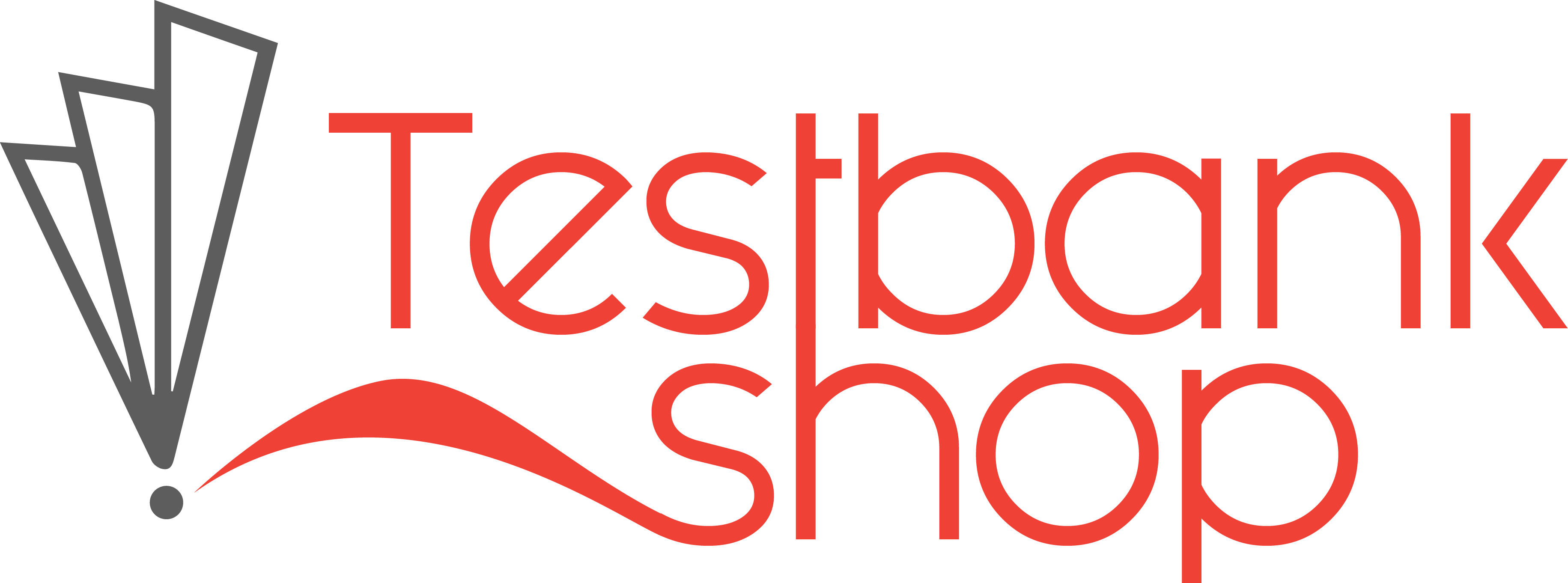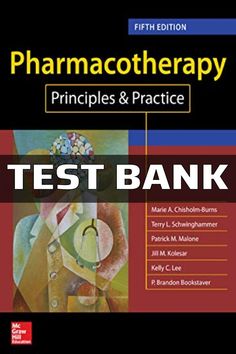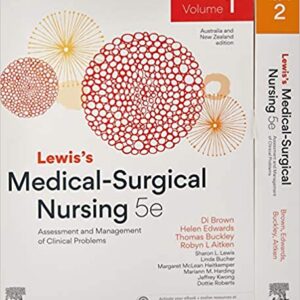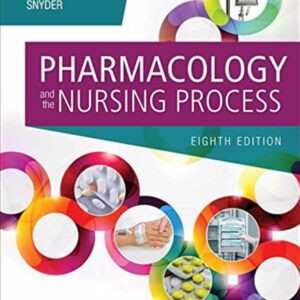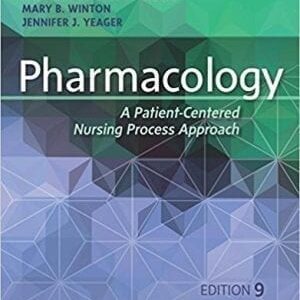Test Bank for Pharmacotherapy Principles and Practice 5th Edition By Chisholm-Burns
CHAPTER 1. Introduction
1. What is the name under which a drug is listed by the U.S. Food and Drug Administration
(FDA)?
a. Brand
b. Nonproprietary
c. Official
d. Trademark
2. Which source contains information specific to nutritional supplements?
a. USP Dictionary of USAN & International Drug Names
b. Natural Medicines Comprehensive Database
c. United States Pharmacopoeia/National Formulary (USP NF)
d. Drug Interaction Facts
3. What is the most comprehensive reference available to research a drug interaction?
a. Drug Facts and Comparisons
b. Drug Interaction Facts
c. Handbook on Injectable Drugs
d. Martindale Complete Drug Reference
4. The physician has written an order for a drug with which the nurse is unfamiliar. Which
section of thePhysicians Desk Reference (PDR) is most helpful to get information about this
drug?
a. Manufacturers section
b. Brand and Generic Name section
c. Product Category section
d. Product Information section
5. Which online drug reference makes available to health care providers and the public a
standard, comprehensive, up to date look up and downloadable resource about medicines?
a. American Drug Index
b. American Hospital Formulary
c. DailyMed
d. Physicians Desk Reference (PDR)
6. Which legislation authorizes the FDA to determine the safety of a drug before its marketing?
a. Federal Food, Drug, and Cosmetic Act (1938)
b. Durham Humphrey Amendment (1952)
c. Controlled Substances Act (1970)
d. Kefauver Harris Drug Amendment (1962)
7. Meperidine (Demerol) is a narcotic with a high potential for physical and psychological
dependency. Under which classification does this drug fall?
a.I
b.II
c.III
d.IV
8. What would the FDA do to expedite drug development and approval for an outbreak of
smallpox, for which there is no known treatment?
a. List smallpox as a health orphan disease.
b. Omit the preclinical research phase.
c. Extend the clinical research phase.
d. Fast track the investigational drug.
9. Which statement is true about over the counter (OTC) drugs?
a. They are not listed in the USP NF.
b. A prescription from a health care provider is needed.
c. They are sold without a prescription.
d. They are known only by their brand names.
10. Which is the most authoritative reference for medications that are injected?
a. Physicians Desk Reference
b. Handbook on Injectable Drugs
c. DailyMed
d. Handbook of Nonprescription Drugs
11. The nurse is administering Lomotil, a Schedule V drug. Which statement is true about this
drugs classification?
a. Abuse potential for this drug is low.
b. Psychological dependency is likely.
c. There is a high potential for abuse.
d. This drug is not a controlled substance.
12. The nurse is transcribing new orders written for a patient with a substance abuse history.
Choose the medication ordered that has the greatest risk for abuse.
a. Lomotil
b. Diazepam
c. Phenobarbital
d. Lortab
13. The nurse is caring for a patient newly diagnosed with type 1 diabetes mellitus. Which
approach(es) to therapeutic methods would be considered in this patients treatment? (Select all
that apply.)
a. Therapeutic drugs
b. Concentrated carbohydrate diet
c. Family centered care
d. Regular daily exercise and activity
e. Daily baths
14. An older adult experiencing shortness of breath is brought to the hospital by her daughter.
While obtaining the medication history from the patient and her daughter, the nurse discovers
that neither has a list of the patients current medications or prescriptions. All the patient has is a
weekly pill dispenser that contains four different pills. The prescriptions are filled through the
local pharmacy. Which resource(s) would be appropriate to use in determining the medication
names and doses? (Select all that apply.)
a. MartindaleThe Complete Drug Reference
b. Physicians Desk Reference, Section 4
c. Senior citizens center
d. Patients home pharmacy
15. The nurse planning patient teaching regarding drug names would include which
statement(s)? (Select all that apply.)
a. Most drug companies place their products on the market under generic names.
The official name is the name under which the drug is listed by the U.S. Food and Drug
b. Administration (FDA).
c. Brand names are easier to pronounce, spell, and remember.
d. The first letter of the generic name is not capitalized.
e. The chemical name is most meaningful to the patient.
16. When categorizing, the nurse is aware that which drug(s) would be considered Schedule
II? (Select all that apply.)
a. Marijuana
b. Percodan
c. Amphetamines
d. Fiorinal
e. Flurazepam
Answers
1. C
2. C
3. B
4. B
5. C
6. A
7. B
8. D
9. C
10. B
11. A
12. D
13. A,B,D
14. B,D
15. B,C,D
16.B,C
